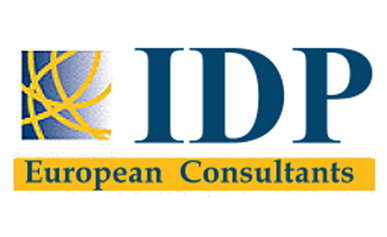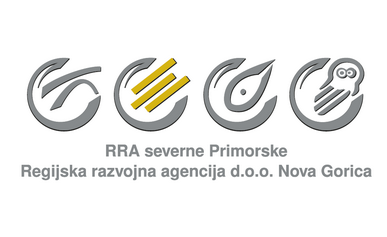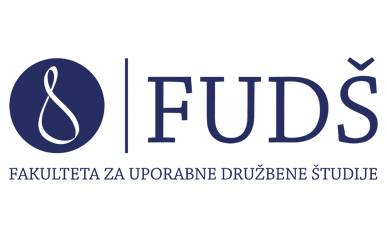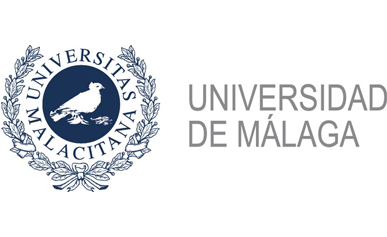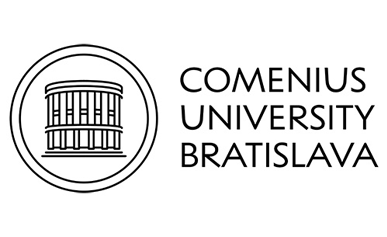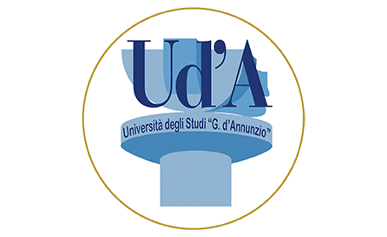
Training
|
Adaptability skills Learning outcomesClick to read

Adaptability and flexibilityClick to read
 Adaptability is the ability to be flexible and adjust to changing factors, conditions or environments. Being adaptable is highly valued skill in workplace. Look at insights and thoughts on adaptability and the future of work by leaders from around the world in a mini-documentary film. Some people may find adaptation easy while others might find it more difficult. If you would like to develop this skill within yourself, consider build up your self-confidence, see a different perspective, recognize that failure happens. Adaptability and flexibility are two very similar terms that differ slightly. You have to be flexible to be adaptable, but if you are flexible that doesn´t necessarily mean you are adaptable. In other words, flexibility is a component of being adaptable. Being flexible in life means that you can change your plans and adapt to new situations easily. Workplace adaptabilityClick to read
 Workplace adaptability is the ability to respond effectively to different scenarios and challenges within the workplace. Becoming adaptable at work helps you respond to new situations, new roles, new projects, and new clients. Learning to become more adaptable at work takes time and focus, it is more about the journey than the end result. Learning soft skills like adaptability may not come with and official certification or be as measurable as hard skills, but they can do just as much, if not more, for your success if you are leader or team member. Adaptable people develop targeted skill sets, processes, and frameworks that allow them to quickly and efficiently deal with different situations as they arise. Becoming adaptable at work helps you respond to new situations, new roles, new projects, and new clients. As you develop this skill set, you'll be able to face any change that comes your way. The Center for Creative Leadership breaks adaptability skills into 3 categories: Cognitive adaptability, emotional adaptability and personality adaptability. Workplace flexibilityClick to read
 Workplace flexibility is the ability to evaluate occurrences and adjust to the roles and tasks or the job being offered. Workplace flexibility is a working arrangement whereby there is flexibility for an employee as to where he/she wants to work, the time he/she will work, and how he/she will work. Examples in which benefit both E-E is work-life balance, boosted productivity or be more responsive to change. Managers and leaders the world over transitioning from the traditional way of working to the new and modern way. For example: work from home option, workplace independence or option of working arrangement. Small businesses are inclined into adapting workplace flexibility because they are trying to cut costs when it comes to the utilities and rent spending, they have the liberty to do this since their operations are not that large-scaled and they have a small number of people to handle. Exercises and practiceClick to read
 Answer the following questions to see if you have adaptability or determine if it is a skill that you might need to work on some more:
Give yourself 1 point if you answered “no” to 1-3, and 1 point for each “yes” for 4-8. Higher scores could be indicative of less adaptable and more rigid ways of thinking. Take a look at some examples on how you can build, refine, and grow your adaptability skills through exercises and practice: Example: Leave your ego at the door Your team recently hosted a creative brainstorming session, but your idea did not get chosen. It is normal to feel disappointed. But instead of staying sad about it, you can choose to let it go. Leave your ego at the door and embrace the idea your team decided to move forward with. In doing so, you are making it safe for others to express their creativity with even more unique ideas. You are also teaching yourself that there are multiple solutions to a problem, and you can adapt no matter which one moves forward. Analytical Thinking The basicsClick to read
 “On average about forty percent of the human mind consists of data, thirty percent information, twenty percent knowledge, ten percent understanding, and virtually no wisdom” (Ackoff, 1989, 3). Original graphic by Hugh MacLeod @hughcards, extended by David Sommerville @smrvl
The art of thinkingClick to read
 What is cognition? The ability to process information through perception, knowledge acquired through experience, and our personal characteristics that allow us to integrate all of this information to evaluate and interpret our world. It is the ability that we have to assimilate and process the information that we receive from different sources (perception, experience, beliefs, etc.) and convert them into knowledge. It includes different cognitive processes, like learning, attention, memory, language, reasoning, decision making, etc., which are part of our intellectual development and experience.
The trap called Belief systemsClick to read

Open-mindedness, scepticism in critical thinking Click to read

Dispositions of a critical thinker Click to read
 12 personal traits to work on to become a flexible, adaptable, and complex critical thinker, resilient , and sought-after individual, and worker:
Final thought Click to read

Continuous Learning and Learning Strategies Continuous learning fundamentalsClick to read
 “Study without desire spoils the memory, and it retains nothing that it takes in.” — Leonardo da Vinci
Continuous Learning:
Watch this short video to learn how to boost a lifelong learner in you! How would you approach continuous learning in your everyday life? Look at the forms of continuous learning: mentorship programs; peer discussion groups; certification programs; workshops; relevant online/offline sources i.e., newsletters, research databases or YouTube channels of your interest; team-building sessions; conferences; study programs at your workplace; learning by teach someone else, etc. UnlearningClick to read
 "No problem can withstand the assault of sustained thinking." — Voltaire
Learning strategiesClick to read

Find out more and watch 6-minutes video of Elon Musk’s 2 Rules For Learning Anything Faster
Summing upClick to read

| |||||||||||||||||||||||||||||||||||||||||||||||||||||||
Keywords
Adaptability; Flexibility; Analytical thinking; Critical thinking, Continuous learning; Soft skills
Objectives/goals:The objectives of this module are to introduce the soft skills that are important for the 21st-century workplace, explain how to potentially improve them and transmit them into work and life.
- Getting familiar with the fundamental concepts presented in this module
- Developing one’s soft skills and being able to apply them in the workplace
- Understanding the opportunities and challenges offered by the addressed soft skills
Content index:
Key competences for the 21st-century workplace
Unit 1: Adaptability skills
Section 1.1: Adaptability and flexibility
Section 1.2: Workplace adaptability
Section 1.3: Workplace flexibility
Section 1.4: Exercises and practice
Unit 2: Analytical Thinking
Section 2.1: The basics
Section 2.2: The art of thinking
Section 2.3: The trap called Belief systems
Section 2.4: Open-mindedness, scepticism in critical thinking
Section 2.5: Dispositions of a critical thinker
Section 2.5: Final thought
Unit 3: Continuous Learning and Learning Strategies
Section 3.1: Continuous learning fundamentals
Section 3.2: Unlearning
Section 3.3: Learning strategies
Unit 1
- Todd, S. (n.d.). Importance of Workplace Adaptability and Flexibility. Open Sourced Workplace. https://opensourcedworkplace.com/news/importance-of-workplace-adaptability-and-flexibility
- Todd, S. (n.d.). What is Workplace Flexibility? (Advantages for Employer and Employees). Open Sourced Workplace. https://opensourcedworkplace.com/news/what-is-workplace-flexibility-advantages-for-employer-and-employees
- Indeed Editorial Team. (2022, June 21). Adaptability in the Workplace: Benefits and Importance. Indeed Career Guide. https://www.indeed.com/career-advice/career-development/adaptability-in-the-workplace
- Raeburn, A. (2022, July 12). 6 Tips to Increase Your Adaptability In the Workplace. Asana. https://asana.com/resources/workplace-adaptability-skills
- Saavedra, J. (2022) Adaptability: Definition, Examples, & Tips. Webpage Berkeley, https://www.berkeleywellbeing.com/adaptability.html
Unit 2
- Dwyer, Ch. (2019, April 5). 12 Important Dispositions for Critical Thinking. Psychology Today. https://www.psychologytoday.com/us/blog/thoughts-thinking/201904/12-important-dispositions-critical-thinking
- Akadémia kritického myslenia (n.d.). Čo je kritické myslenie. AKM. https://kritickemyslenie.sk/co-je-kriticke-myslenie/
- Dwyer, Ch. (2019, April 26). Open-Mindedness and Skepticism in Critical Thinking Psychology Today. https://www.psychologytoday.com/us/blog/thoughts-thinking/201904/open-mindedness-and-skepticism-in-critical-thinking
- Usó-Doménech, J. L.; Nescolarde-Selva, J. (2015, January 14). Open-Mindedness and Skepticism in Critical Thinking Springer Link. https://link.springer.com/article/10.1007/s10699-015-9409-z
- Practice Aptitude Tests (n.d.). What Is Logical Reasoning? A Definition & Overview. Practice Aptitude Tests. https://www.practiceaptitudetests.com/what-is-logical-reasoning/
- Information Factory (n.d.). Data To Wisdom Via Information, Knowledge & Insight. Information Factory. https://theifactory.com/news/gaining-wisdom-from-data/
- Jay H. Bernstein—Kingsborough Community College - The Data-Information-Knowledge-Wisdom Hierarchy and its Antithesis
Unit 3
- Nesvig, B. (2014, March 04). 35 Inspiring Quotes About Learning. Dashe & Thomson. https://www.dashe.com/blog/motivation/inspiring-learning-quotes/
- George Roberts. (2013, April 30). What is learning? [Video https://www.youtube.com/watch?v=EtT31Sn1Ukk
- Merriam-Webster. (n.d.). Learning. https://www.merriam-webster.com/dictionary/learning
- Malamed, C. (n.d.). 10 Definitions of Learning. The Learning Coach. https://theelearningcoach.com/learning/10-definitions-learning/
- Nagpal, A. (2017, June 30). 7 Reasons Why Continuous Learning is Important. LinkedIn. https://www.linkedin.com/pulse/7-reasons-why-continuous-learning-important-amit-nagpal/
- Sword, R. (2021, August 11). Why is Continuous Learning Important? High Speed Training. https://www.highspeedtraining.co.uk/hub/why-is-continuous-learning-important/
- Sharma, I. (2022, February 15). Lifelong Learning is the New Normal. Here’s How You Benefit From It. Emeritus. https://emeritus.org/blog/benefits-of-lifelong-learning/
- Indeed. (2022, August 03). 12 Benefits of Continuous Learning at Work (Plus Tips). https://www.indeed.com/career-advice/career-development/benefits-of-continuous-learning-at-work
- https://www.dashe.com/blog/motivation/inspiring-learning-quotes/
- Tupper, H., & Ellis, S. (2021, November 04). Make Learning a Part of Your Daily Routine. Harvard Business Review. https://hbr.org/2021/11/make-learning-a-part-of-your-daily-routine
- Sumeracki, M. (2021, November). Six Strategies for Effective Learning: A Summary for Teachers. The Learning Scientists. https://www.learningscientists.org/blog/2019/11/28-1
- Gonzales, J. (2016, December 11). 6 Powerful Learning Strategies You MUST Share with Students. Cult of Pedagogy. https://www.cultofpedagogy.com/learning-strategies/
- Edutopia. (2022, November 16). 3 Ways to Make Learning Stick With Better Note-Taking. https://www.edutopia.org/video/3-ways-to-make-learning-stick-with-better-note-taking
- https://www.youtube.com/watch?v=K_Mku_lciF0
- https://www.youtube.com/watch?v=4dlq7HuUJtQ
- https://www.youtube.com/watch?v=hXqqruJF9gI
- https://www.youtube.com/watch?v=xJM_CQN8-ns
- https://www.youtube.com/watch?v=lHaQtAXCckg
- https://www.youtube.com/watch?v=DbjZEDR5EXI
- https://www.youtube.com/watch?v=46CYtwXH_aE
- https://www.youtube.com/watch?v=W9CcdjEqUag
- https://www.youtube.com/watch?v=cqRoGpSGFwk&ab_channel=TheArtofImprovement
- https://www.youtube.com/watch?v=BKfCUY_8-z0
- https://www.youtube.com/watch?v=4hu-8yPo8Pg
- https://www.youtube.com/watch?v=KtsCD4RQiLU
- https://www.youtube.com/watch?v=IX0rxQ_1K0w
- https://www.youtube.com/watch?v=CyEBdF7qDFo
- https://www.youtube.com/watch?v=wixEGpznyG8
- https://www.youtube.com/watch?v=xLkC-ODKQSc
Related training material
 Play Audio
Play Audio 





